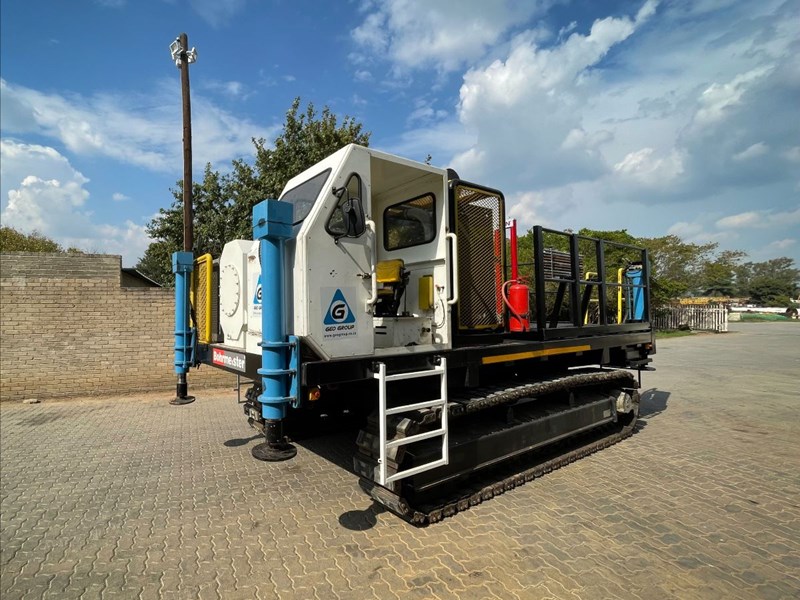Our Newest Edition

Over the past couple of months, we have been very busy with the manufacturing and assembly of our new customized CPTu rig specifically designed with stability in mind. Stability, which is a very important factor when conducting CPTu tests where the ground conditions show characteristics of a lower shear strength value or cohesiveness. With our smaller TG63-150 and TG73-200 CPTu rigs, one must make use of the anchor system to generate the reaction force since the rig itself is not sufficient to provide the reaction force required to advance the CPTu probe into the ground. Our operators often find it challenging to properly anchor the rig in looser, more sandy soil types. The reason being that the probe reaches harder or cohesive Geological features at depth which create certain refusal criteria due to the rig which has overcome the reaction force supplied by the anchoring system. Should a rig lift during a test, it can cause major damage to the CPT rods and machinery and could lead to a delay with the project. These delays include mechanical repairs or the time it takes for replacement parts to reach remote locations, to only mention a few. In addition to the logistical issues this imposes, the most important restraint is the early termination of probings which results in the client having less than the desired data set.
The GeoGroup workshop and technical team took these challenges ‘to the drawing board’ to find an all in one solution. We decided that it was best to mount the CPTu 150kN mast to an existing Morooka track base carrier that was already a part of our fleet. By doing this, the rig can now track through loose sand with ease while providing the additional weight needed to keep the rig from lifting. By increasing the weight of the rig, it now acts as a counterweight and provides the reaction force needed to offset the 150kN of thrust applied while advancing the CPTu probe and rods at a constant 2cm per second. This significantly reduces the risk of the rig lifting mid-test. Not only does the new rig customisation offer us the ability to reach remote locations with greater ease, we also save time and resources to limit damage to equipment. Yet another great innovation by our experienced technical and workshop teams! We aim to continuously diversify our fleet of rigs and equipment to ensure we are able to adapt quickly and easily to different site locations and project requirements.
Plot 28 Central Road
Sunrella, Lanseria
Gauteng
South Africa
Tel. +27 (0)861 436 632
Email. info@geogroup.co.za